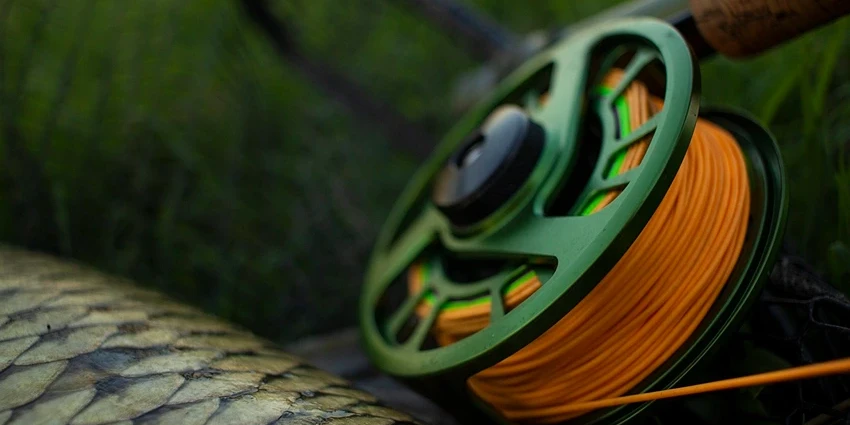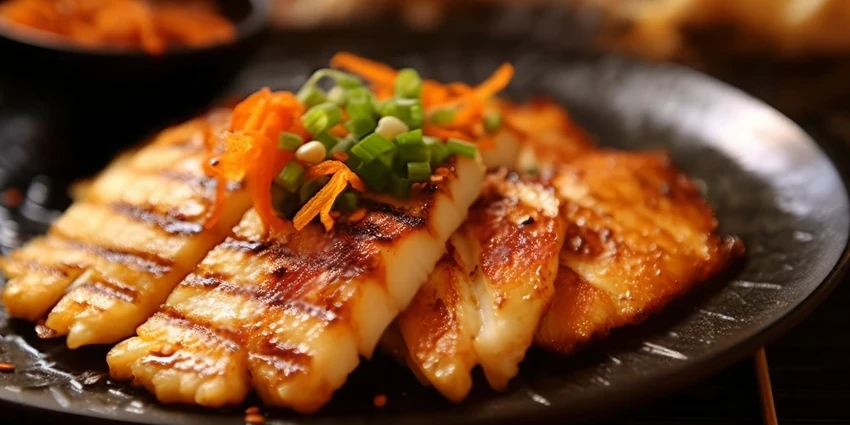All products were chosen independently by our editorial team. This review contains affiliate links and we may receive a commission for purchases made. Please read our affiliates FAQ page to find out more.
Jump to:
Can You Eat Blue Marlin?
Yes, blue marlin is edible and valued in certain cuisines for its firm texture and mild flavor. However, there are concerns about mercury levels, and pregnant women and young children are advised to limit consumption. Choosing smaller, younger fish and proper cooking methods can help minimize potential health risks.
Key Takeaways:
- Understanding Blue Marlin: A deep dive into the physical and ecological aspects of blue marlin.
- Blue Marlin in Fishing Culture: The significance and ethical considerations of fishing for blue marlin.
- Nutritional Profile: Analyzing the health benefits and risks associated with consuming blue marlin.
- Cooking and Preparing Blue Marlin: Exploring the culinary world of blue marlin, including popular recipes and methods.
Blue marlin, a species revered by anglers and gourmets alike, presents a fascinating subject when it comes to culinary exploration. This article delves into various aspects of blue marlin, from its unique characteristics to its place in the world of fishing and cuisine.
Understanding Blue Marlin
Introduction to Blue Marlin
The blue marlin, a marvel of the ocean, is known for its impressive size and majestic appearance. Predominantly found in tropical and subtropical waters, this fish has become a symbol of the sea’s mystery and power.
Characteristics of Blue Marlin
- Size and Appearance: Blue marlin can grow to remarkable sizes, with some specimens reaching over 1,000 pounds. Their elongated bodies, spear-like snouts, and dorsal fins make them easily recognizable.
- Habitat: These fish prefer warm ocean currents and are often found in the Atlantic, Pacific, and Indian Oceans.
- Life Cycle: Blue marlin have a unique life cycle that includes long migrations for feeding and breeding.
Blue Marlin in Fishing Culture
Popularity Among Anglers
Blue marlin are highly sought after in the sportfishing community. Their size and strength make them a challenging and prized catch. However, this popularity has led to concerns over their conservation status.
Conservation Status and Ethical Considerations
- Overfishing: The demand for blue marlin in sport and commercial fishing has raised concerns about overfishing.
- Catch and Release: Many anglers now practice catch and release to help preserve blue marlin populations.
Nutritional Profile of Blue Marlin
Comparison with Other Fish Species
Blue marlin is often compared to other large fish like tuna and swordfish. It’s known for its firm texture and rich flavor, making it a favorite in certain culinary circles.
Nutritional Benefits and Risks
- Benefits: Blue marlin is a good source of protein and contains essential omega-3 fatty acids.
- Risks: Like many large ocean fish, blue marlin can have high levels of mercury, which can pose health risks if consumed in large quantities.
Cooking and Preparing Blue Marlin
Popular Recipes and Cooking Methods
Blue marlin can be prepared in various ways, including grilling, smoking, and baking. Its robust flavor pairs well with bold seasonings and marinades.
Cultural Significance in Different Cuisines
In some cultures, particularly in Japan, blue marlin is considered a delicacy and is often served in high-end restaurants.
Table 1: Nutritional Comparison of Blue Marlin with Other Fish
| Nutrient | Blue Marlin | Tuna | Swordfish |
| Protein (g/100g) | 19 | 23 | 20 |
| Omega-3 (mg/100g) | 200 | 300 | 250 |
| Mercury (ppm) | 0.5 | 0.4 | 0.7 |
Table 2: Blue Marlin in Global Cuisine
| Cuisine | Preparation Method | Common Pairings |
| Japanese | Sashimi | Soy sauce, wasabi |
| American | Grilled | Lemon, herbs |
| Mediterranean | Baked | Olive oil, garlic |
Health and Consumption Considerations
Mercury Content in Blue Marlin
Blue marlin, like many large predatory fish, can accumulate significant amounts of mercury in their bodies. This poses a health risk, particularly for pregnant women, young children, and those with mercury sensitivities.
Sustainable Fishing Practices
- Impact on Marine Biodiversity: Overfishing of blue marlin can disrupt marine ecosystems.
- Responsible Fishing Methods: Advocating for sustainable fishing practices is crucial to ensure the longevity of blue marlin populations.
Alternatives to Blue Marlin
For those concerned about mercury content or ethical implications, there are several sustainable and lower-mercury fish options available.
Table 3: Mercury Levels in Various Fish
| Fish Species | Mercury Level (ppm) |
| Blue Marlin | 0.5 |
| Salmon | 0.01 |
| Mackerel | 0.05 |
| Sardines | 0.013 |
Table 4: Sustainable Fish Alternatives
| Fish Species | Sustainability Rating | Flavor Profile |
| Salmon | High | Rich, fatty |
| Mackerel | Moderate | Strong, oily |
| Sardines | High | Mild, oily |
Register for our latest in-depth reviews and product round-ups from the experts
Enter your email address below to receive our twice monthly reviews emails.
By entering your details, you are agreeing to our terms and conditions and privacy policy. You can unsubscribe at any time.
FAQs on Eating Blue Marlin
While blue marlin can be consumed, it’s important to be mindful of its higher mercury content, especially for vulnerable groups.
Blue marlin has a firm texture and a rich flavor, often compared to tuna or swordfish.
Grilling, smoking, and baking are popular methods that complement its robust flavor.
Due to high mercury levels, it’s advisable for pregnant women and young children to avoid blue marlin.
Yes, overfishing and the impact on marine ecosystems are major concerns, highlighting the need for sustainable fishing practices.
Martin Cochran, renowned for his expertise in deep-sea fishing and marine wildlife, plays a pivotal role at Fresh Catch Daily. His adventures across various oceans have equipped him with unique insights and techniques, enriching our platform with diverse and engaging content for fishing enthusiasts.










